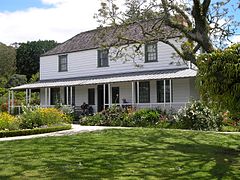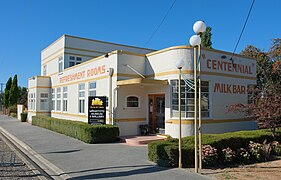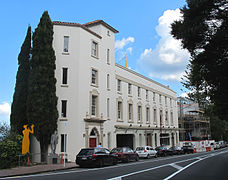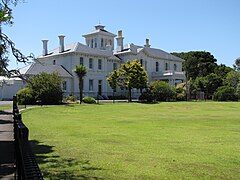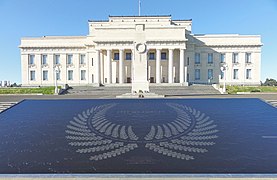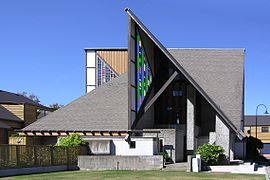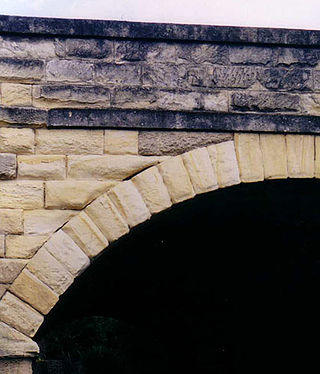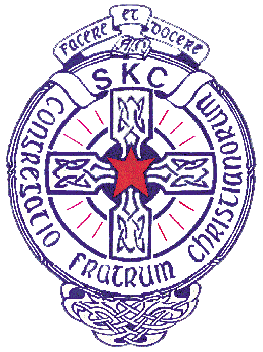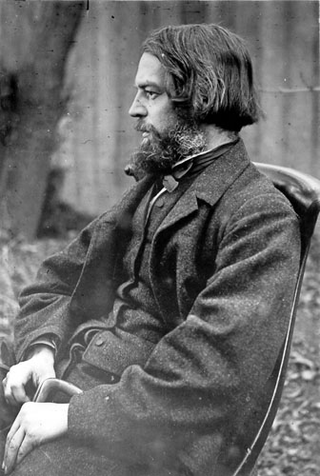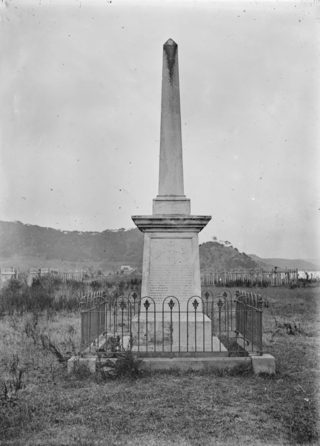History
Before British colonisation of New Zealand, the Indigenous architecture of Māori was an 'elaborate tradition of timber architecture'. [1] Māori constructed rectangular buildings (whare) with a 'small door, an extension of the roof and walls to form a porch, and an interior with hearths along the centre and sleeping places along the walls' for protection against the cold. [2]
As a British colony, the first European buildings were derivative of the European fashions of the time and most colonialists were from England so they reflected English ideas, the first settlers arrived in 1839. [2] Building in stone was realised to be problematic in a land with earthquakes, and there also a lot of timber. [1] There was a Gothic revival style of the 1840s–1860s, and early architects included Benjamin Mountfort and Frederick Thatcher. [2] Significant early colonial buildings include Stone Store, Kemp House (Kerikeri), Pompalier House, Waitangi Treaty House and Old St Paul's in Wellington. [3] In 1905 the New Zealand Institute of Architects was formed. [3]
- Treaty House (from the back) built in 1833–34
- Stone Store, oldest stone building in New Zealand 1836
- Whare mid 1870s (man at front is the Chief Tahau)
- State house, Petone constructed in 1906 designed by Cecil Wood
- Rua Kenana Hepetipa's circular meeting house at Maungapohatu, circa 1908
- Old St Paul's cathedral opened June 1866
- Pataka (storehouse), image 1950s Whakarewarewa
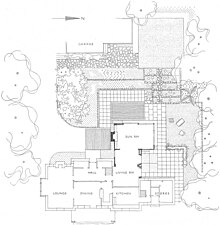
Between 1900 and 1930 is described as a neo-Classical period, notable architecture firms include Hoggard, Prouse and Gummer, Gummer and Ford, W. Gray Young and Cecil Wood. [3]
In the 1930s a modernist aesthetic was introduced to New Zealand, European architect Ernst Plischke was part of this and his wife Anna Plischke brought her European training in landscapes to influence how building related to the outside space around them. [2] [4] [5]
Later European and American styles also were built, for example in the early twentieth century the Californian Bungalow design of a single level wooden building with a verandah became common. [6]
Te Whare Rūnanga, the Māori meeting house on the Treaty of Waitangi grounds was opened on 6 February 1940. [7]
South Island developments
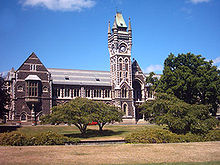
Many of the more imposing structures in and around Dunedin and Christchurch were built in the latter part of the 19th century as a result of the economic boom following the Central Otago Gold Rush. A common style for these landmarks is the use of dark basalt blocks and facings of cream-coloured Oamaru stone, a form of limestone mined at Weston in North Otago. Notable buildings in this style include Dunedin Railway Station, the University of Otago Registry Building, Christchurch Arts Centre, Knox Church, Dunedin, ChristChurch Cathedral, Christchurch, Christ's College, Christchurch, Garrison Hall, Dunedin, parts of the Canterbury Provincial Council Buildings and Otago Boys' High School. Several more recent buildings have mimicked this style by using brick in place of basalt, but using lighter stone facings in an identical style to the older structures. Notable among these buildings are Otago Girls' High School and the Timaru Basilica. This region was able to call upon the talents of many fine architects during this period, among them Robert Lawson, Francis Petre, Benjamin Mountfort, and George Troup.

Oamaru stone, despite its susceptibility to the elements, is used as a major construction material on several fine buildings, most obviously in the town of Oamaru itself. The historic sector of this town contains numerous fine buildings built in this creamy stone, among them the Forrester Gallery and Waitaki District Council building. Waitaki Boys' High School is also a prime example of the use of Oamaru stone architecture.
The Otago town of Ranfurly, which expanded during the 1930s, is also noted for its Art Deco architecture.









